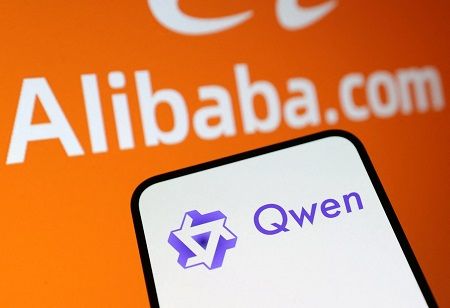Alibaba’s Leap in Multimodal AI Innovation
On June 26, 2025, Alibaba introduced Qwen-VLo, a groundbreaking multimodal AI model designed to compete with OpenAI’s GPT-4o. Touted as a significant upgrade over its predecessors, Qwen-VLo delivers unparalleled precision in image generation, editing, and contextual understanding. With features like progressive generation and multi-image input, it empowers users to create everything from posters to complex visual compositions. This article delves into Qwen-VLo’s capabilities, Alibaba’s strategic vision, and its role in the global AI race, drawing from recent reports and industry insights.

Qwen-VLo: Unpacking Its Advanced Features
Image Generation and Editing Excellence
- Progressive Generation: Qwen-VLo offers real-time visibility into the image creation process, allowing users to fine-tune outputs dynamically. Unlike earlier models like Qwen2.5-VL, it maintains the original image structure while making precise edits, such as adjusting colors or styles, without affecting unrelated elements.
- Multi-Image Input: The model can process multiple images to create or manipulate new visuals. For instance, users can input images of products and a container, and Qwen-VLo will generate a composed image of the items arranged together. This feature, still in partial rollout, enhances creative versatility.
- Open-Ended Creativity: Qwen-VLo handles complex prompts, applying specific artistic styles, weather effects, or historical aesthetics. It supports multilingual instructions, currently in Chinese and English, with plans to expand further.
Multimodal Understanding Capabilities
- Contextual Intelligence: The model excels at interpreting context, enabling high-quality image generation from nuanced prompts. It can analyze charts, extract invoice data, and comprehend long videos, making it ideal for both creative and analytical tasks.
- Device Interaction: Qwen-VLo can control software on PCs and mobile devices, such as launching apps or performing tasks like booking flights, akin to OpenAI’s Operator. However, its performance in real-world device control is less robust compared to competitors.
Technical Specifications
- Model Variants: Part of the Qwen2.5-VL series, Qwen-VLo ranges from 3 billion to 72 billion parameters. The flagship Qwen2.5-VL-72B-Instruct is available on Alibaba’s Qwen Chat platform and open-source platforms like Hugging Face, with commercial use for large organizations requiring Alibaba’s approval.
- Performance Edge: Alibaba claims Qwen-VLo surpasses OpenAI’s GPT-4o, Anthropic’s Claude 3.5 Sonnet, and Google’s Gemini 2.0 Flash in benchmarks like video understanding, math, document analysis, and question-answering. It also outperforms DeepSeek’s V3 in select tests, though comparisons with DeepSeek’s R1 are pending.
Alibaba’s AI Strategy: Driving Global Innovation
- Open-Source Commitment: Alibaba has open-sourced smaller models (3B and 7B parameters) under Apache 2.0, encouraging developer adoption, while the 72B model uses a custom license. This strategy counters DeepSeek’s low-cost, open-source models, which have disrupted China’s AI market.
- Leadership Vision: CEO Eddie Wu emphasized Alibaba’s goal to build AI with human-level intellectual capabilities, with Qwen-VLo as a cornerstone. Its integration into Alibaba Cloud and Qwen Chat enhances accessibility for developers worldwide.
- Market Dynamics: Qwen-VLo’s launch responds to China’s competitive AI landscape, where price cuts of up to 97% reflect a race to offer cost-efficient, high-performing models, challenging U.S. dominance.
Community and Industry Reactions
Social Media Sentiment
The online community is abuzz with excitement over Qwen-VLo’s capabilities. Users praise its progressive generation and multilingual support, noting its superior image understanding compared to earlier models. Some highlight Alibaba’s Qwen-Max outperforming DeepSeek-V3 in coding and math, signaling strong interest in Alibaba’s AI advancements.
Industry Insights
Reports describe Qwen-VLo as Alibaba’s most precise image generation model, lauding its control over AI outputs. Its versatility for creative tasks like poster design is a standout, though its device control lags behind OpenAI’s Operator in real-world scenarios. The launch intensifies China’s AI competition, with Alibaba, ByteDance, and SenseTime vying for leadership, posing a challenge to U.S. firms investing heavily in AI.
The Bigger Picture: Reshaping the AI Landscape
Qwen-VLo’s debut highlights China’s growing influence in AI, with cost-efficient models like DeepSeek’s prompting concerns about U.S. investment gaps. A 2025 report notes India’s 92% AI adoption rate, but job displacement fears persist, with 65% of Indians advocating for stronger regulations to address risks like disinformation. Alibaba’s open-source approach and Qwen-VLo’s capabilities position it to transform creative industries and developer workflows globally.
FAQ: Key Questions Answered
What is Alibaba’s Qwen-VLo?
Launched June 26, 2025, Qwen-VLo is a multimodal AI model excelling in image generation, editing, and contextual understanding, designed to rival OpenAI’s GPT-4o.
What are its standout features?
It offers progressive image generation, multi-image input, multilingual support, and device control, ideal for creative and analytical tasks like poster design and data extraction.
How does Qwen-VLo compare to GPT-4o?
Alibaba claims superiority in video understanding, math, and document analysis, though it trails in some real-world device control tasks.
Is Qwen-VLo open-source?
Smaller models (3B and 7B parameters) are open-source under Apache 2.0, while the 72B model requires Alibaba’s permission for commercial use by large organizations.
How does it impact the global AI market?
Qwen-VLo fuels China’s AI race, offering cost-efficient, high-performing alternatives to U.S. models, driving innovation and intensifying competition.
A New Era for Multimodal AI
Alibaba’s Qwen-VLo, launched on June 26, 2025, sets a new benchmark in multimodal AI with its advanced image generation, precise editing, and robust contextual understanding. As a formidable rival to OpenAI’s GPT-4o, it empowers creators and developers with tools for dynamic visual content and data analysis. Despite minor limitations in device control, its open-source availability and integration into Alibaba Cloud make it a catalyst for innovation. As China’s AI landscape heats up, Qwen-VLo positions Alibaba as a global leader, redefining the future of generative technology.




